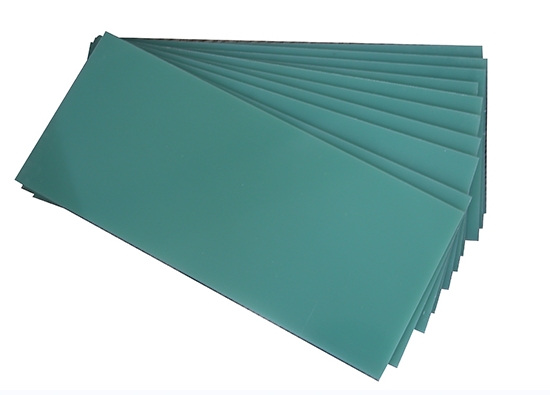- 29
- Sep
Grade classification description of epoxy resin insulation board
Grade classification description of epoxy resin insulation board
Epoxy resins generally refer to organic polymer compounds containing two or more epoxy groups in the molecule. Except for a few, their relative molecular masses are not high. The molecular structure of epoxy resin is characterized by the active epoxy group in the molecular chain. The epoxy group can be located at the end, in the middle or in a cyclic structure of the molecular chain. Because the molecular structure contains active epoxy groups, they can undergo cross-linking reactions with various types of curing agents to form insoluble and infusible polymers with a three-way network structure.

Application characteristics of epoxy resin insulation board
1. Various forms. Various resins, curing agents, and modifier systems can almost adapt to the requirements of various applications on the form, and the range can be from very low viscosity to high melting point solids.
2. Convenient curing. Choose a variety of different curing agents, the epoxy resin system can almost be cured in the temperature range of 0 ~ 180 ℃.
3. Strong adhesion. The inherent polar hydroxyl groups and ether bonds in the molecular chain of epoxy resins make it highly adhesive to various substances. The shrinkage of epoxy resin is low when curing, and the internal stress generated is small, which also helps to improve the adhesion strength.
4. Low shrinkage. The reaction between the epoxy resin and the curing agent used is carried out by direct addition reaction or ring-opening polymerization reaction of epoxy groups in the resin molecule, and no water or other volatile by-products are released. Compared with unsaturated polyester resins and phenolic resins, they show very low shrinkage (less than 2%) during curing.
5. Mechanical properties. The cured epoxy resin system has excellent mechanical properties.
6. Electrical performance. The cured epoxy resin system is an excellent insulating material with high dielectric properties, surface leakage resistance, and arc resistance.
7. Chemical stability. Generally, the cured epoxy resin system has excellent alkali resistance, acid resistance and solvent resistance. Like other properties of the cured epoxy system, the chemical stability also depends on the selected resin and curing agent. Appropriate selection of epoxy resin and curing agent can make it have special chemical stability.
8. Dimensional stability. The combination of many of the above properties gives the epoxy resin system outstanding dimensional stability and durability.
9. Resistant to mold. The cured epoxy resin system is resistant to most molds and can be used in harsh tropical conditions.
Type classification
According to the molecular structure, epoxy resins can be roughly divided into five categories:
1. Glycidyl ether epoxy resin
2. Glycidyl ester epoxy resin
3. Glycidylamine epoxy resin
4. Linear aliphatic epoxy resin
5. Alicyclic epoxy resin
